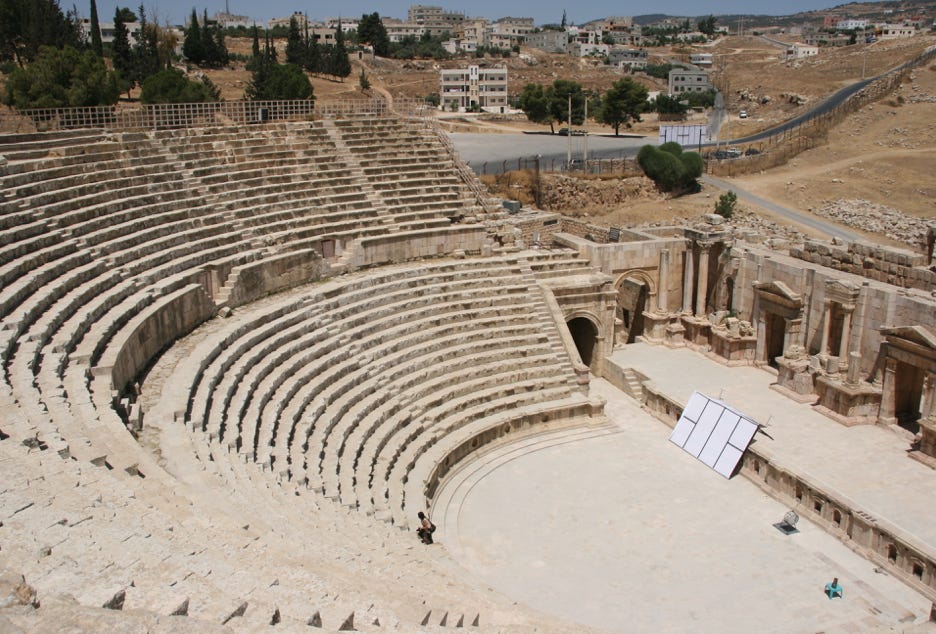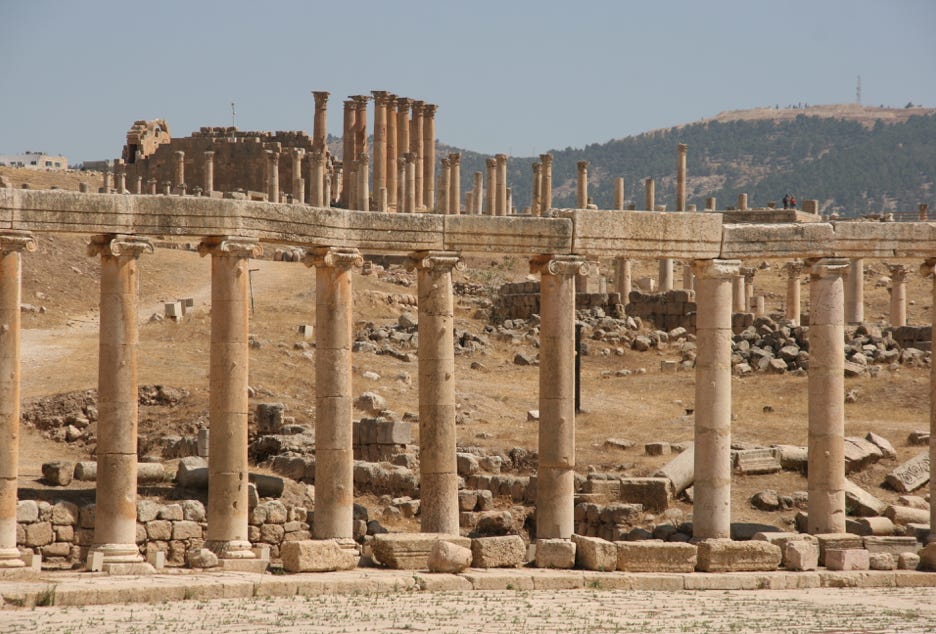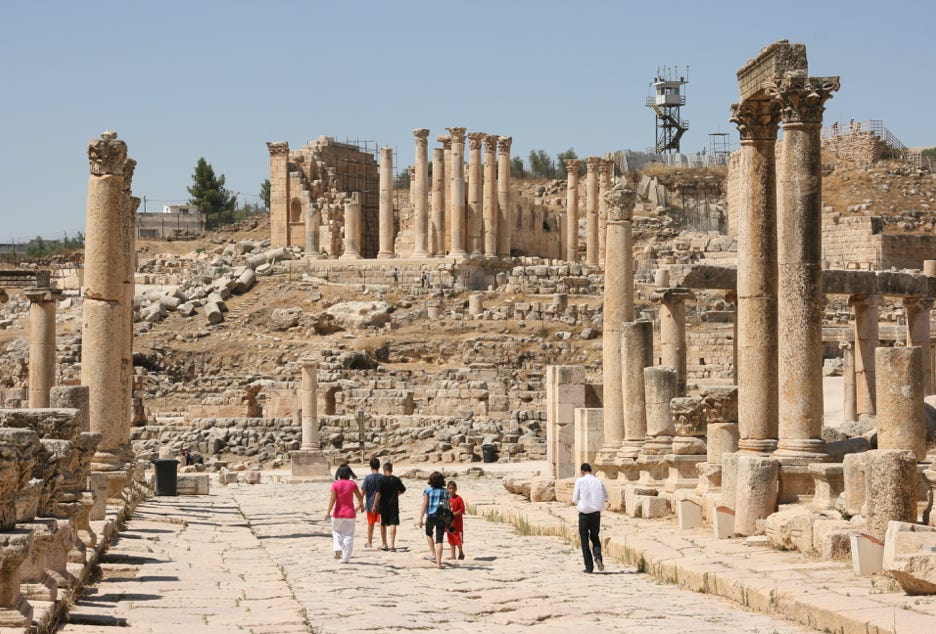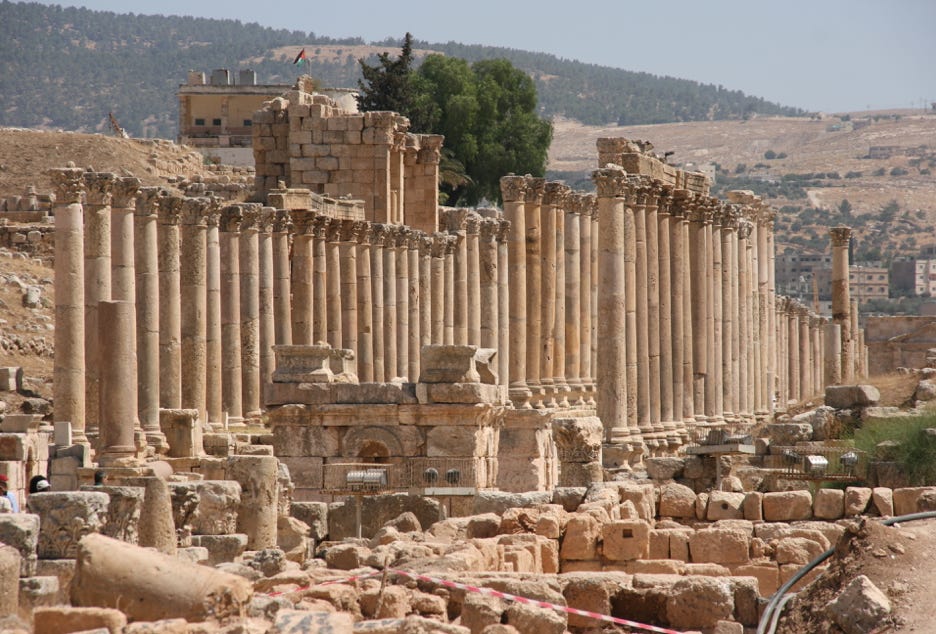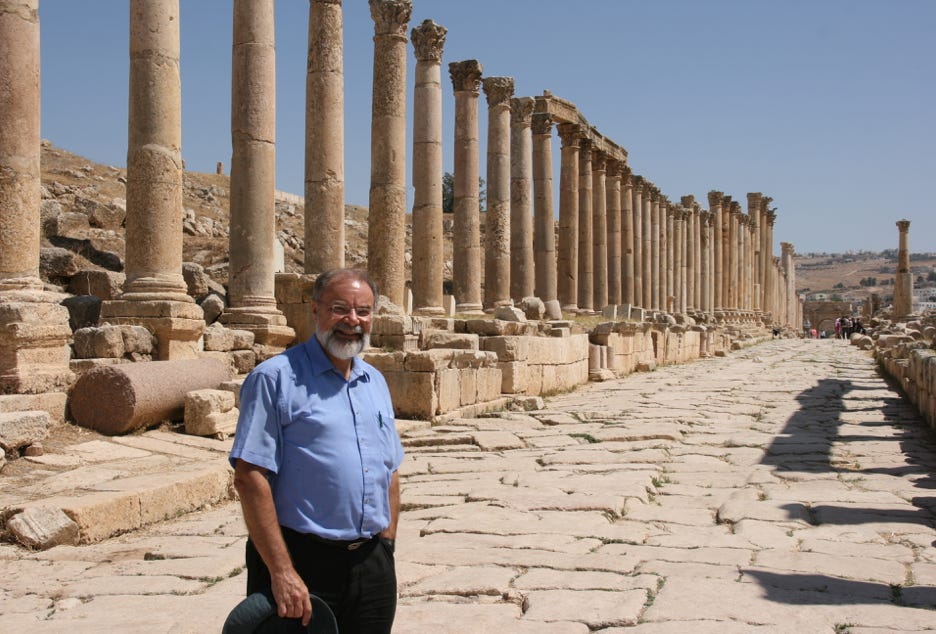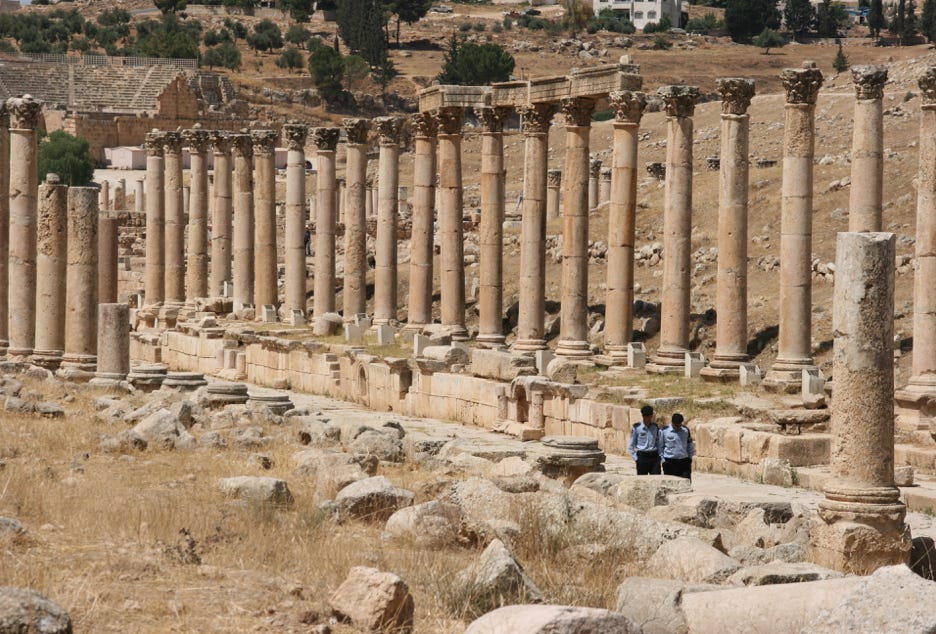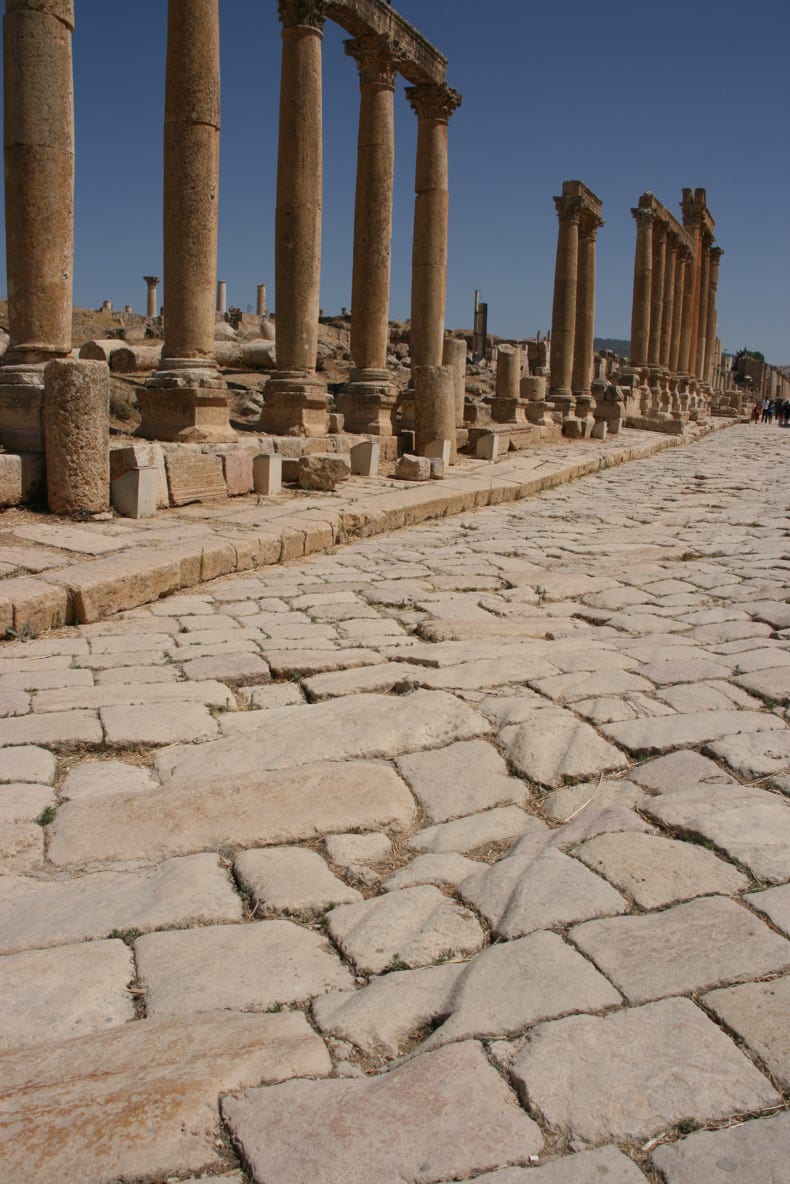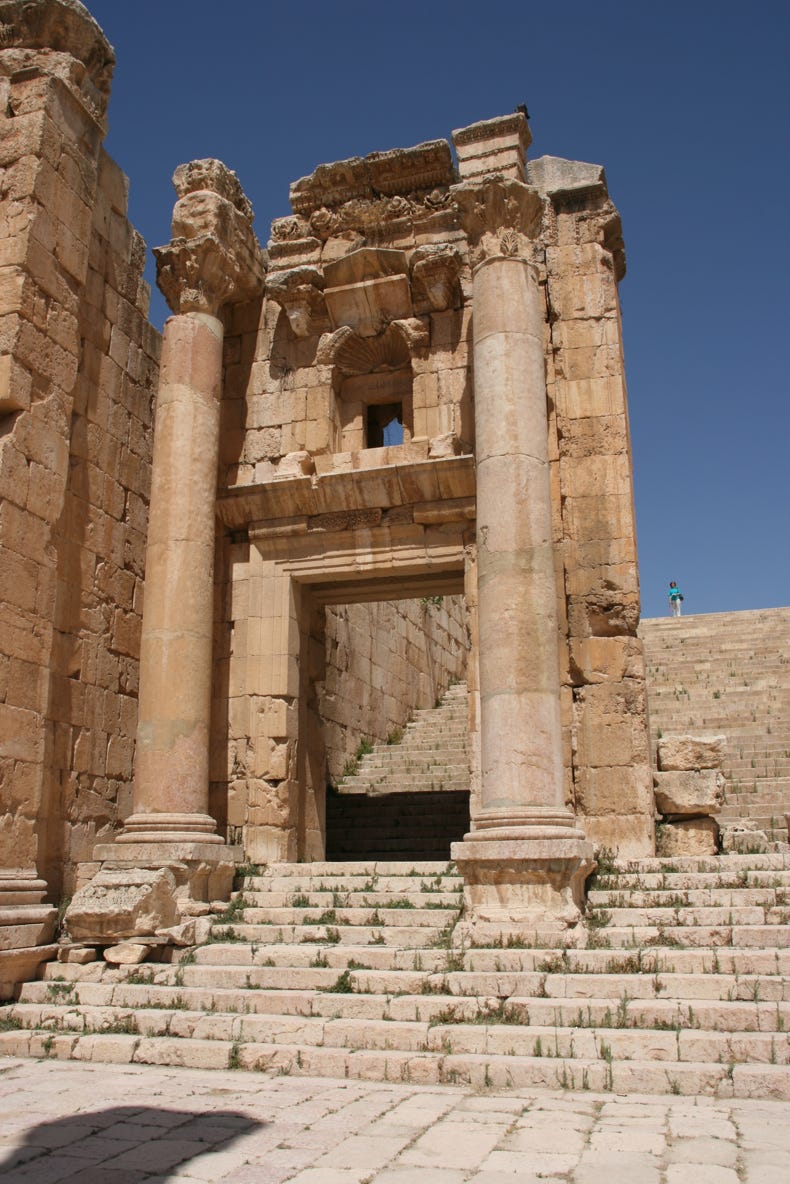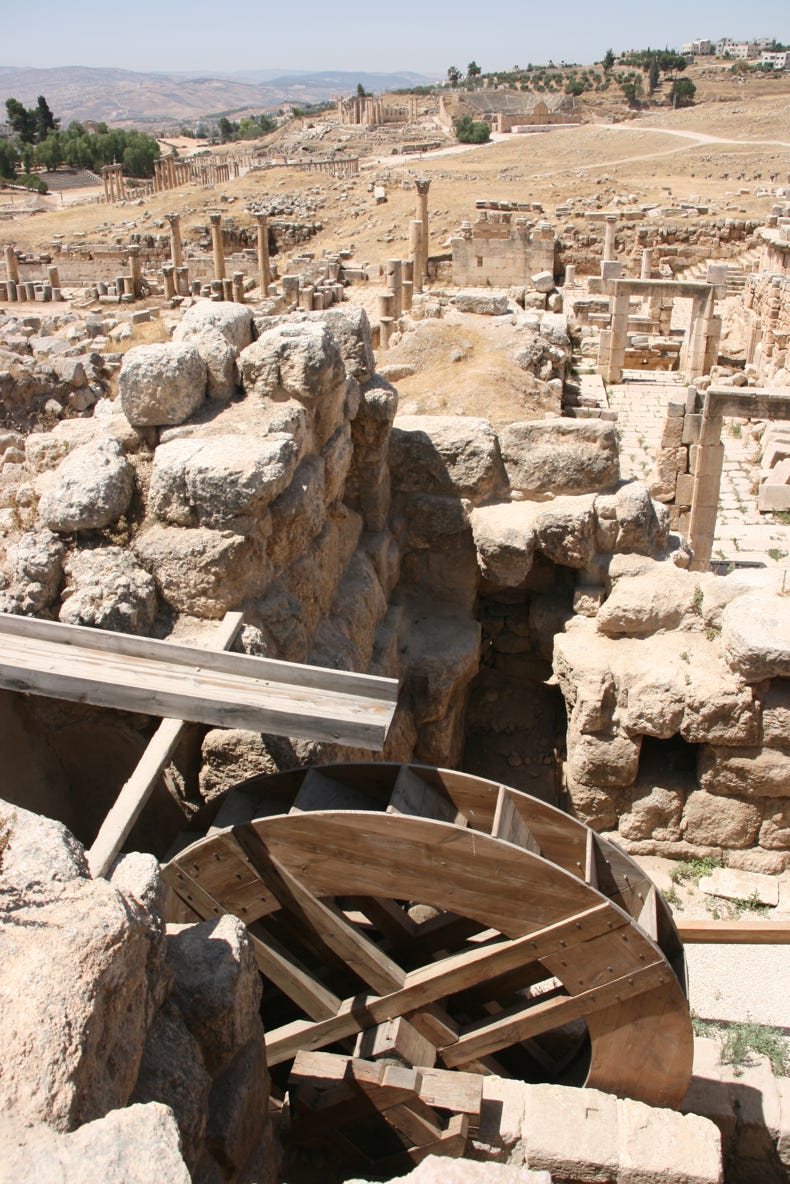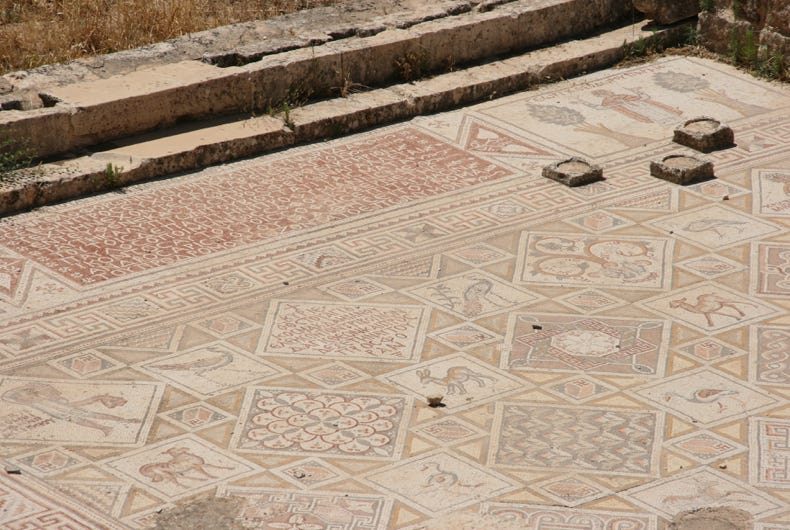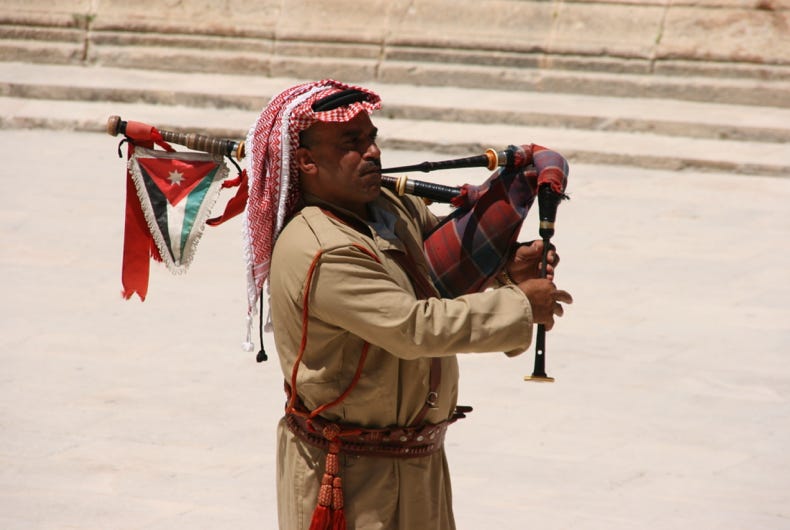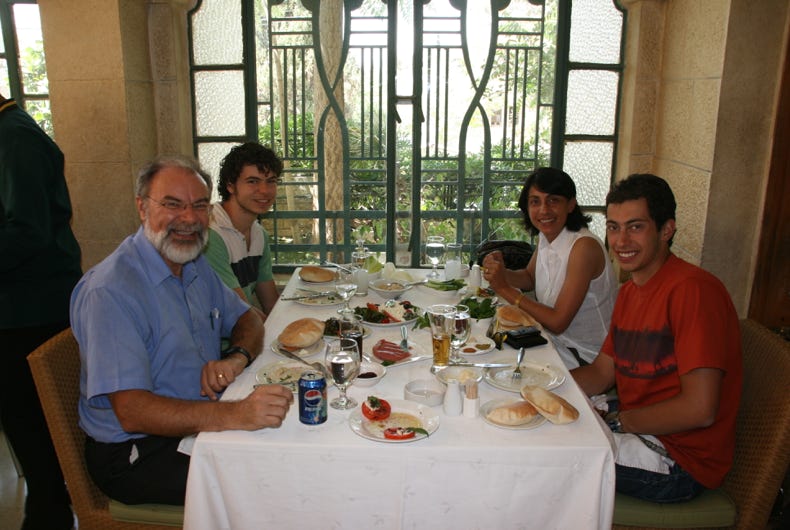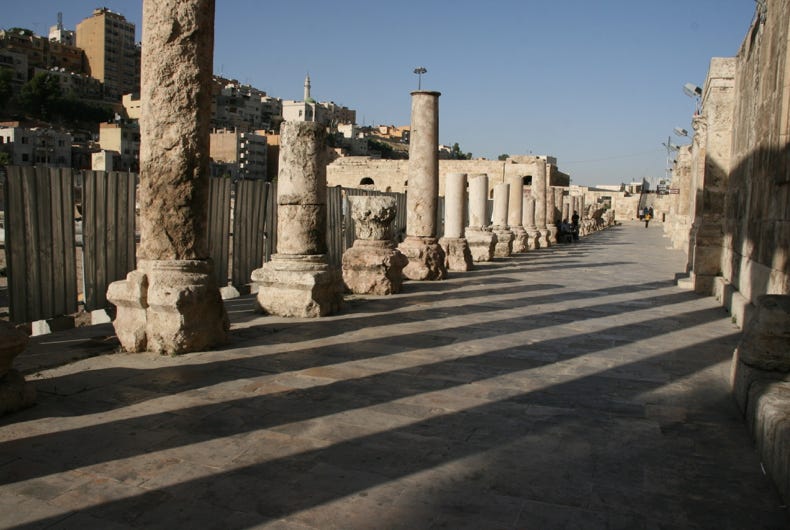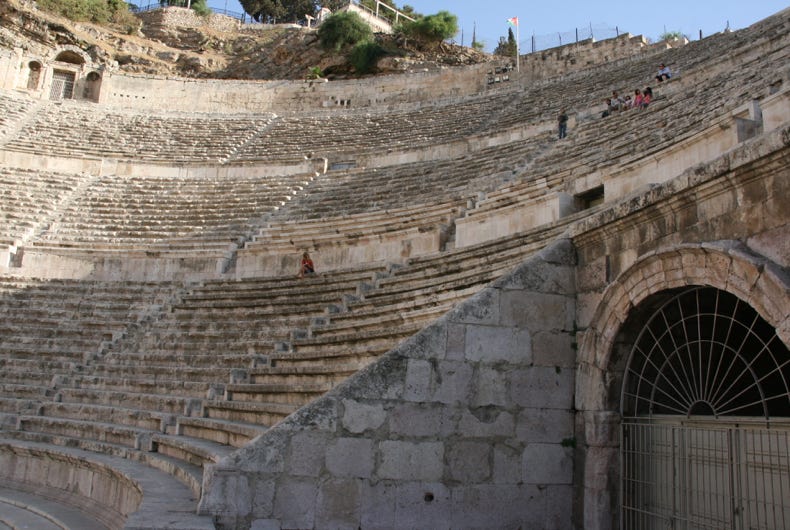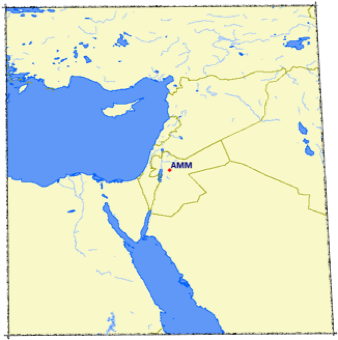
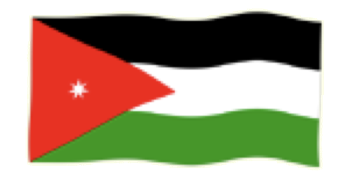

With temperatures today in the low thirties and with clear, blue skies overhead, today has been a most enjoyable day of exploring Amman and some nearby areas, as well as catching up with former students and families who have become good friends.
Our first destination for today was Jerash, a small city with about 160,000 people situated just over 50 kilometres from Amman. To get there we took a short taxi ride to the Northern Bus Station from which we caught a minibus to Jerash; remarkable value at just under US$1. I would like to say that I enjoyed the scenery on the trip, but an elderly men who was also on the bus wanted to engage me in conversation, so I spent most of my time looking at him rather than the scenery. He was a Muslim electrician, and he brilliantly exemplified the gentle, warm, tolerant attitude that most Jordanians have towards visitors.
The reason for the trip to Jerash is that at the heart of the town there is a large area of beautifully preserved Roman ruins. This part of Jordan became part of the Roman Empire in 64 BC when the General Pompey conquered the region in that year. Most of the structures in Jerash were built in the period 125 AD to 165 AD.
We began our walk at the southern end of the town by walking through Hadrian’s Arch, built in 129 AD to honour a visit by the Emperor Hadrian. Immediately behind the arch was a large hippodrome where chariot races were held, watched by audiences of up to 150,000 people.
After walking past the hippodrome, we entered the main part of the Roman town through the South Gate, one of the ancient city’s four gates, built in 130 AD. This led into an area known as the Oval Plaza (or Forum), a large paved area 90 metres wide and 80 metres long that was surrounded by a colonnade of stone pillars. It must have been a very imposing sight indeed in its heyday.
To the immediate south of the Forum was a small temple, built in 162 AD and originally dedicated to the Roman god Zeus, and behind that a large amphitheatre that could seat 5000 spectators. The amphitheatre offered magnificent views over the ancient city, and its perfect acoustics were put to the test by a local man playing – somewhat surprisingly – Scottish bagpipes.
Running to the north of the Forum was the city’s main thoroughfare, the Cardo Maximus, lined with colonnades that were even larger than those surrounding the Oval Plaza. The Cardo Maximus stretched for 800 metres from the Forum to the North Gate of the city. The thoroughfare was paved with its original stones, still showing in some places the grooves made by chariots in Roman times.
About half way along the Cardo Maximus was a large nymphaem (the main fountain of the city), and shortly after that, a long flight of stairs took us to the remains of a large temple, the Temple of Artemis.
Near the temple there was a reconstructed water wheel that was designed to demonstrate how stone blocks were cut in ancient times, and a little further on, some beautiful mosaic floors in what was once an early Christian church.
We spent a couple of hours exploring Jerash, and we could have easily spent more, but we wanted to return to Amman to join one of my former students from Jordan, Firas, and his mother for lunch. To say that lunch was superb would be a huge understatement. We went to a Lebanese restaurant where the sensational food – healthy and in copious quantities – provided a perfect setting for a wonderful fun-filled afternoon of catching up with news and swapping ideas on almost every area imaginable. Following lunch we drove to Firas’ home for coffee, which we enjoyed in the afternoon shade of his small back garden.
By the time we farewelled Firas, it was getting late in the afternoon, so we decided to try and squeeze in one last piece of sightseeing in Amman, the Roman Theatre. Built at some time during the reign of Emperor Antoninus Pius (138 AD to 161 AD) and able to seat 6000 people, the Roman Theatre is (to quote the Lonely Planet Guidebook) “the most obvious and impressive remnant of ancient Philadelphia”, as Amman was once known.
Immediately in front of the Theatre was a row of columns, the sole remains of what was once one of the largest public squares in the Roman Empire, the 100 by 50 metre Forum. We arrived at the Roman Theatre just 15 minutes before closing time (which was 6 pm), but it was enough time to explore the Theatre and then enjoy the late afternoon shadows cast by the Forum’s remaining pillars.
Apparently today was the birthday of Jordan’s crown prince (who, incidentally, is a student at King’s Academy where the previous three days workshops were held). This probably explains the late afternoon flypasts of air force helicopters over downtown Amman and the formation of F-16 jet fighters that also screamed overhead, not to mention the scattered displays of fireworks in the early evening.

